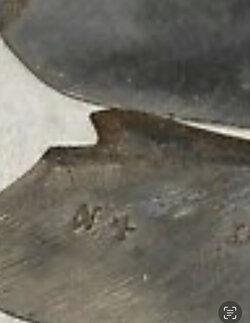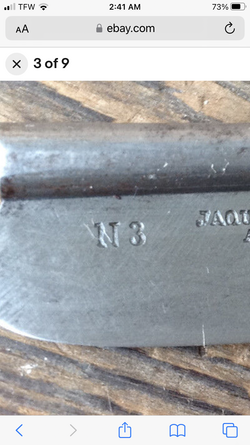Once I knew what was missing I was able to do some research. There were several styles of stamping used to number these blades if they were part of a set I imagine.
I did some test “burns” to see what etching compound would work as well as how much time is needed per session. 30 second increments.
The pic with 2 images ,one , on the right was water vinegar and salt. The other with an acid based formula to create patina on metals.
It was all done with a 9V battery , some basic wires and the etching solution.
My mask was my wife’s nail polish. I did several variations of time, repeats etc. to find a happy medium.
For my stylus I have a mechanical pencil that I took a piece of steel rod, chucked it in my drill and spun it against a grinding wheel. you can also use a pin and simply stick it in a pencil eraser. It works.
Not perfect by any means considering the size but it no longer looks like some errant stamp or some blemish on the blade. View attachment 1654105View attachment 1654107View attachment 1654106KoiView attachment 1654108




 View attachment 1654105View attachment 1654106View attachment 1654107View attachment 1654108
View attachment 1654105View attachment 1654106View attachment 1654107View attachment 1654108





I did some test “burns” to see what etching compound would work as well as how much time is needed per session. 30 second increments.
The pic with 2 images ,one , on the right was water vinegar and salt. The other with an acid based formula to create patina on metals.
It was all done with a 9V battery , some basic wires and the etching solution.
My mask was my wife’s nail polish. I did several variations of time, repeats etc. to find a happy medium.
For my stylus I have a mechanical pencil that I took a piece of steel rod, chucked it in my drill and spun it against a grinding wheel. you can also use a pin and simply stick it in a pencil eraser. It works.
Not perfect by any means considering the size but it no longer looks like some errant stamp or some blemish on the blade. View attachment 1654105View attachment 1654107View attachment 1654106KoiView attachment 1654108
Last edited:


